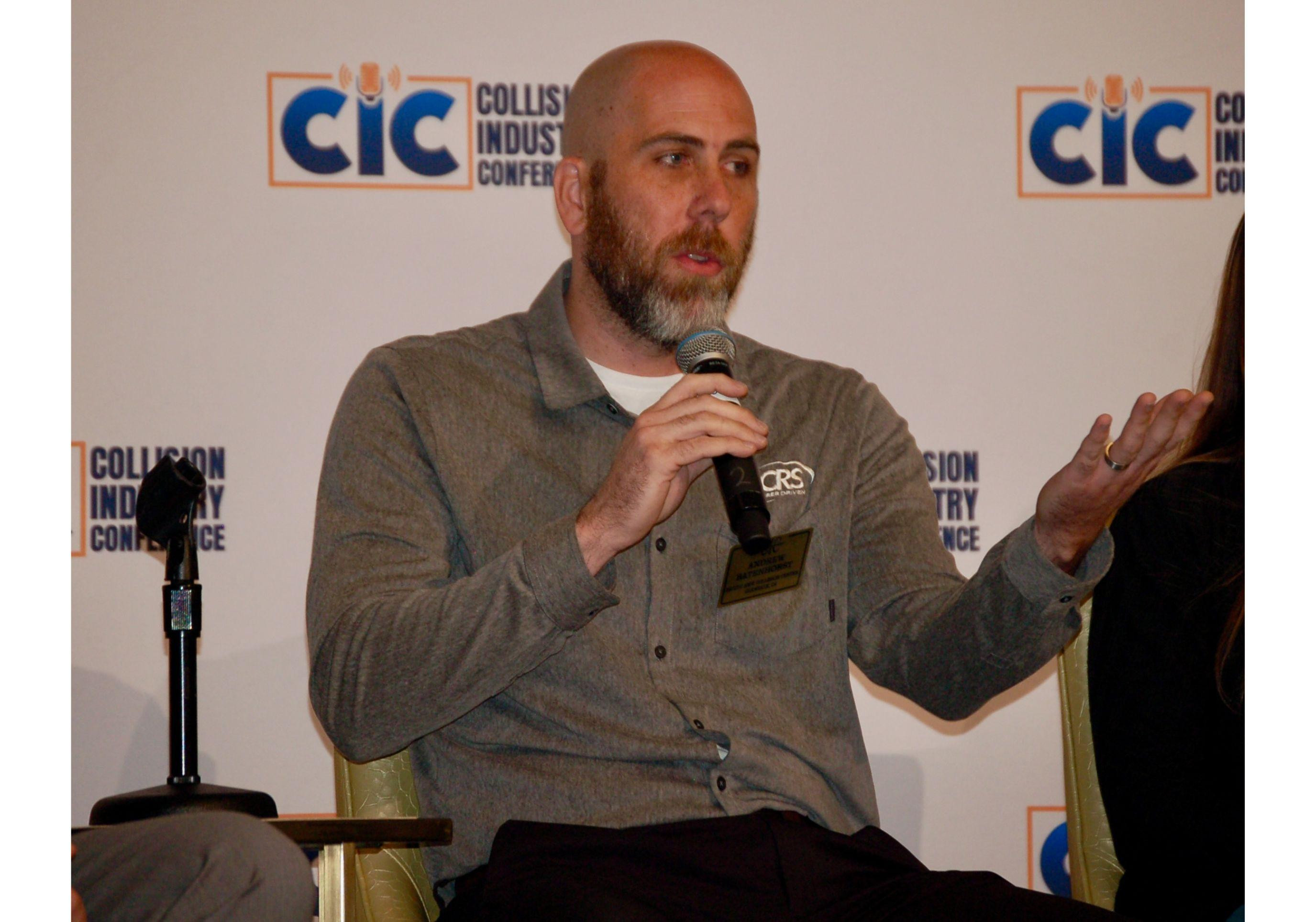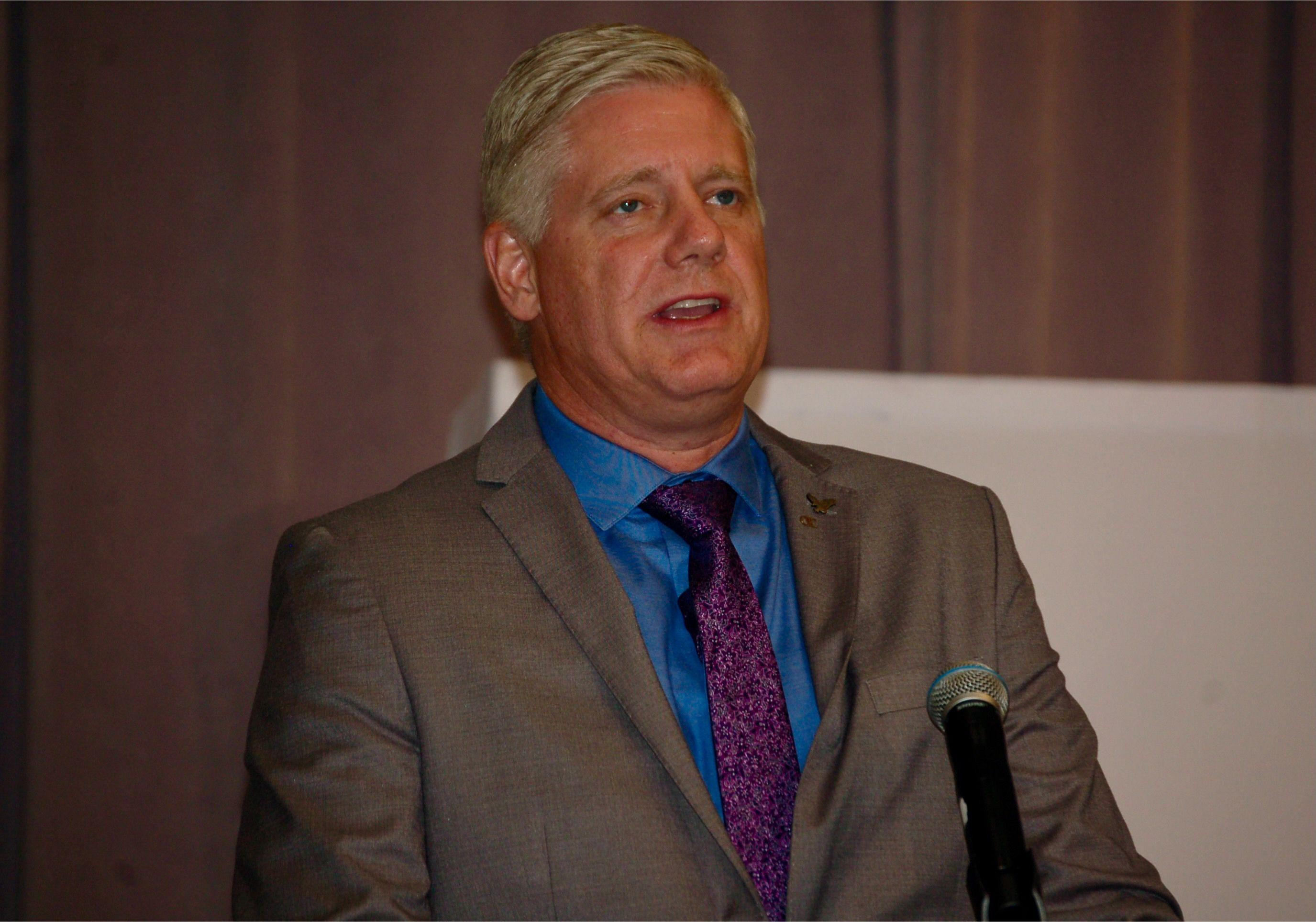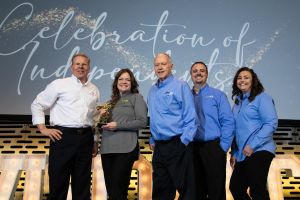Collision repairers for decades have understood the concept of “judgement times,” having to determine while looking at the vehicle how much labor will be required to repair a particular dent in a panel, for example.
Given changes in the estimating systems in the past year, determining blend time has become another of the items requiring an “on-the-spot evaluation.”
Though the 50% of full refinish time remains the default setting for calculating blend times in the CCC Intelligent Solutions and Solera (Audatex) estimating systems, users can change that percentage, and the two companies changed their guidance to say blend times vary and require a vehicle-by-vehicle evaluation. Mitchell continues to use the 50% formula but has given users the ability to change that percentage in the system.
A committee presentation at the Collision Industry Conference (CIC) in Denver this past summer highlighted how many other collision repair labor operations there are that, like blending, require the judgement or “on-the-spot evaluation” by the estimator.
Danny Gredinberg of the Database Enhancement Gateway (DEG) noted there are many not-included labor procedures that body technicians in shops may be performing. He said the “labor general information” section of the Mitchell P-pages lists 17 body-labor-related items that would be additions to its published times, including broken glass clean-up and tar and grease removal.
“It should not be inferred that a component with no established labor time has been included in another component’s replacement allowance,” the Mitchell P-pages state.
The Motor Information Guide to Estimating -- the basis for the CCC estimating system -- lists 43 not-included items in the body section alone, including “road test vehicle” and “anti-corrosion material restoration/application.” The Solera (Audatex) database reference manual lists 61 body-related “labor exclusions,” including “assembly of new parts that come unassembled,” and “disassembly of recycled parts and assemblies.”
“So there’s many different things you may need to consider in the repair process as an ‘on-the-spot’ evaluation,” Gredinburg said.
‘Repair or Replace’ Considerations
Andrew Batenhorst of the CIC Estimating and Repair Planning Committee pointed to a series of factors that can play into case-by-case decisions during estimating related to repair versus replace of a damaged panel.
 Andrew Batenhorst.
Andrew Batenhorst.
The first, he said, involves reviewing the automaker documentation to look for any guidelines, the types and mil thickness of material involved, limits on the use of heat, whether there are restrictions on access to replacement parts, and what types of tools or consumables would be needed for repair.
“That brings us to accessibility, basically factoring what panels are around where we’re working, how much room we have from the backside, are we going to have any issues with getting the tools onto the panel to do what we need to do to properly straighten it,” Batenhorst said. “If we’re inhibited from doing that, that could lead to a ‘replace’ decision instead.”
Another factor is whether there is damage in a crumple zone that would affect repairability.
“In many cases, that’s a deal-breaker automatically,” he said. “If a crumple zone is affected, going back to the OEM instructions, that may right away warrant the replacement.”
Similarly, an estimator needs to determine if body lines or contours on a damaged part can be recreated accurately.
“The invasiveness of the repair is also very important,” Batenhorst said. “Our approach is always to minimize the intrusiveness to the vehicle, and try to preserve as much of factory e-coating, and limit how drastically we need to go into the car.”
There are refinish considerations, such as how much factory corrosion protection needs to be protected or restored, maximizing the amount of factory paint as possible, and considering whether refinishing or blending of adjacent panels would be involved.
One final consideration is part availability.
“Obviously, there's a financial or economic decision that gets factored into this,” Batenhorst said. “We are still dealing in many cases with part delays from all the turmoil that’s in the world currently. Sometimes that may cause you to have a different approach to that repair or replace decision that you’re trying to make.”
Industry Slow to Change
Despite the prevalence of on-the-spot evaluations required during estimating, many in the industry see resistance among some insurers to move away from strict use of the 50% formula for blending rather than looking at it based on the factors that vary from vehicle to vehicle.
Darrell Amberson of the LaMettry’s Collision chain in Minnesota said changes to such things as the blend formula often take too long to get implemented.
“As an industry, when we have some significant changes come along, we’re notoriously slow,” Amberson said. “It tends to take us years to really evolve to the point where the dust settles and common compensation methodologies are established as the norm.”
He said he’s discouraged by how few insurers have been open to moving away from the old blend formula.
“I get a lot of excuses that are not necessarily based on good logic,” Amberson said. “Right now we have one insurer that’s adjusted its normal pricing. We have some others that are on a case-by-case basis. But a whole lot of them are just not doing anything.”
 Dan Risley.
Dan Risley.
He said he agreed repairers need to focus on the variables impacting the blend procedure the paint companies point to, rather than just the outcome of the 2022 blend study by the Society of Collision Repair Specialists, despite the efforts to make the study “accurate, fair and reasonable.”
“I’ve seen many industry changes over the years where we start a conversation and often there’s not much flexibility on the two sides,” Amberson said. “And then after a lot of education and discussions, we tend to evolve and find some kind of common ground. But we don’t do that enough or quick enough.
“We need more discussions like this [at CIC]. We need more activity from the paint companies. We need more insurance companies to come in and really understand the situation and help us all evolve,” he continued. “Too many times there’s a kind of a bullheadedness, ‘We’re just not going to accept a change,’ and that’s not necessarily reasonable.”
Saying he was speaking for a shop owner who couldn’t attend CIC, Andy Tylka of TAG Auto Group said that shop owner sees part of the problem is that 50% of full refinish time is still the default for blending in the CCC estimating system.
“He feels that doesn’t open up the mentality that it is an on-the-spot evaluation,” Tylka said. “He is continuing to get responses from insurance companies that assume that the default is the standard. They’re referencing it as the standard, the established formula of CCC. He asked me to [say] that he feels like that 50% needs to go away. It needs to be a forced adjustment on every profile. Because right now it [seems to be] implying that there’s a recommended formula.”
Dan Risley of CCC Intelligent Solutions is the current chair of CIC, and he addressed that comment later in the meeting.
“I think it’s really a continual education process because we have the slider in there for the [user] to choose whatever they feel is necessary as an on-the-spot evaluation,” Risley said. “The language is in there referencing the fact that it’s an on-the-spot evaluation. But that said, I heard the point loud and clear, and I’ll make sure I’ll bring that back to our team.”















John Yoswick